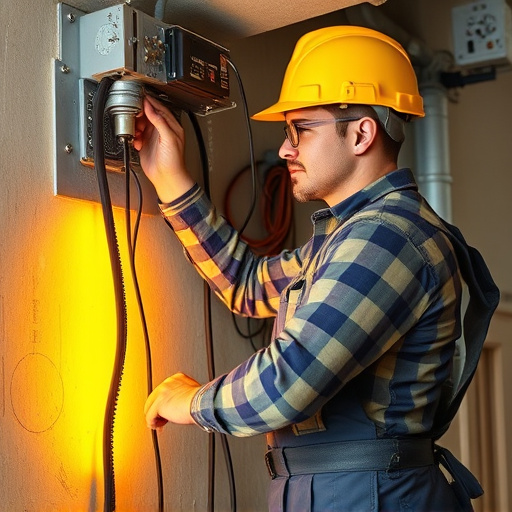Street performances with modified vehicles have evolved, emphasizing legal considerations for safety and environmental protection. Legal cold air intake (CAI) systems are a key development, enhancing engine performance while adhering to strict emissions regulations. CAIs redirect outside air into the engine, improving combustion and power without compromising emissions standards. Street performers worldwide adopt eco-friendly practices, using CAIs and efficient fuel injection to significantly reduce emissions without sacrificing performance, contributing to a cleaner environment in the process.
In today’s digital era, the concept of legal street performance goes beyond mere speed and power. It now encompasses environmental considerations, particularly in reducing emissions. This article explores the intricate relationship between legal cold air intake (CAI) systems and their pivotal role in enhancing street performance while minimizing emissions. We delve into strategies that enthusiasts can adopt to upgrade their vehicles, ensuring they remain within legal limits and contribute to a cleaner environment.
- Understanding Legal Street Performance and Its Impact on Emissions
- The Role of Cold Air Intake Systems in Enhancing Legal Street Performance
- Strategies for Upgrading to Legal Street Performance While Reducing Emissions
Understanding Legal Street Performance and Its Impact on Emissions

Street performances, especially those involving vehicles, have evolved over time, and understanding the legal aspects is crucial for both performers and enthusiasts. Legal street performance focuses on modifying vehicles to enhance their power and sound while adhering to specific regulations to ensure safety and environmental considerations. One significant aspect is the use of legal cold air intake (CAI) systems. These systems replace the factory-fitted air filters with high-flow filters, allowing for greater airflow into the engine, resulting in improved performance and potentially lower emissions when combined with other modifications.
The impact on emissions is a critical factor in the debate around legal street performances. While CAIs can contribute to better fuel efficiency by optimizing air-fuel ratios, they might also lead to increased exhaust emissions if not properly managed. Therefore, performers must ensure that any modifications, including CAI installations, comply with local environmental laws and are accompanied by regular maintenance to minimize adverse effects on air quality.
The Role of Cold Air Intake Systems in Enhancing Legal Street Performance

Legal street performance upgrades often focus on enhancing engine power and efficiency while adhering to strict environmental regulations, especially regarding emissions. Here’s where legal cold air intake (CAI) systems play a pivotal role. By redirecting outside air directly into the engine through a dedicated intake path, these systems deliver cooler, denser air, which improves combustion and increases horsepower. This simple yet effective modification ensures that street-legal vehicles can achieve better performance without compromising emissions standards.
In contrast to stock intake systems that may be restricted or contaminated with cabin air, legal cold air intake systems extract air from a clean, undisturbed source, typically outside the vehicle. This direct approach optimizes airflow, enabling the engine to burn fuel more efficiently. As a result, vehicles equipped with CAIs often exhibit improved throttle response and overall drivability while still meeting legal emissions requirements, making them an attractive upgrade for street-legal performance enthusiasts.
Strategies for Upgrading to Legal Street Performance While Reducing Emissions

Street performers around the world are embracing innovative strategies to elevate their craft while adhering to local regulations, particularly focusing on reducing emissions from their performance equipment. One effective approach involves the utilization of legal cold air intake (CAI) systems. These specialized systems are designed to draw in cooler, cleaner air, enhancing engine performance and significantly lowering emissions. By replacing illegal or poorly maintained intakes, performers can ensure their setups meet environmental standards without compromising power output.
Additionally, integrating efficient fuel injection technologies and regular maintenance routines contributes to minimizing exhaust emissions. Many legal CAI systems come equipped with advanced filters that trap pollutants, allowing performers to maintain a clean environment while delivering breathtaking performances. This dual focus on sustainability and artistic excellence represents a modern upgrade for the street performance community.
Legal street performance upgrades, particularly through the strategic implementation of cold air intake systems, offer a promising path towards enhancing vehicle power and efficiency without compromising environmental standards. By focusing on these advancements, we can achieve significant reductions in emissions while fostering a more sustainable and dynamic automotive landscape. Cold air intake systems, when legally integrated, play a pivotal role in maximizing engine performance while adhering to strict emission regulations. This balanced approach ensures that both drivers’ desires for improved street performance and the environment’s need for reduced pollutants are met.














